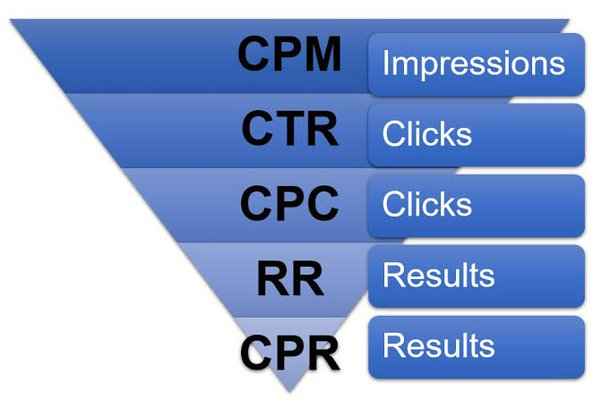What is CPM, CPC, CPA, and CTR? Understanding Digital Marketing Metrics
If you’re a digital marketer or run an online business, you might have come across the terms CPM, CPC, CPA, and CTR. These acronyms represent different digital marketing metrics that help businesses measure the effectiveness of their advertising campaigns.
In this article, we’ll define and explain what CPM, CPC, CPA, and CTR are and how they impact your digital marketing efforts. We’ll also answer some frequently asked questions related to these metrics.
Description
Learn what CPM, CPC, CPA, and CTR are, and how they impact your digital marketing efforts. Get insights into these essential digital marketing metrics and improve your advertising campaigns.
Introduction
Digital marketing has become an integral part of any business strategy. Companies invest significant amounts of money in advertising campaigns to reach their target audience and achieve their business goals. However, to evaluate the effectiveness of these campaigns, businesses need to track various metrics, including CPM, CPC, CPA, and CTR.
Understanding these metrics is crucial for any business that wants to optimize its advertising campaigns and maximize its ROI. Let’s take a closer look at each of these metrics and what they represent.
What is CPM, CPC, CPA, and CTR?
Before diving deeper into each of these metrics, let’s define what CPM, CPC, CPA, and CTR mean.
- CPM (Cost per Mille) is a metric that represents the cost of displaying an ad to 1,000 people. In other words, it measures how much a business pays for every 1,000 ad impressions.
- CPC (Cost per Click) is a metric that represents the cost of getting a user to click on an ad. It measures how much a business pays for every click on their ad.
- CPA (Cost per Acquisition) is a metric that represents the cost of acquiring a new customer through an ad campaign. It measures how much a business pays for every new customer acquired through their ad.
- CTR (Click-Through Rate) is a metric that represents the percentage of users who click on an ad after seeing it. It measures the effectiveness of an ad in getting users to click through to a website or landing page.
Understanding CPM, CPC, CPA, and CTR
Now that we’ve defined what CPM, CPC, CPA, and CTR are let’s take a closer look at each metric and how it impacts your digital marketing efforts.
CPM
CPM is a metric that measures the cost of displaying an ad to 1,000 people. It’s a pricing model used in display advertising, where advertisers pay for the number of impressions their ad receives. The higher the CPM, the more expensive it is to advertise.
CPM is an essential metric for businesses that want to increase their brand awareness and reach a broader audience. However, it’s important to note that CPM doesn’t measure the effectiveness of an ad in getting users to take action. It only measures how many people have seen the ad.
CPC
CPC is a metric that measures the cost of getting a user to click on an ad. It’s a pricing model used in paid search advertising, where advertisers pay for each click on their ad. The higher the CPC, the more expensive it is to advertise.
CPC is an important metric for businesses that want to drive traffic to their website or landing page. However, it’s essential to ensure that the cost per click is lower than the profit generated from each click.
CPA
CPA is a metric that measures the cost of acquiring a new customer through an ad campaign. It’s a pricing model used in performance marketing, where advertisers pay for each customer acquired through their ad. The higher the CPA, the more expensive it is to acquire a new customer.
CPA is a critical metric for businesses that want to track the effectiveness of their ad campaigns in generating new customers. However, it’s important to note that CPA doesn’t consider customer lifetime value (CLV). Therefore, it’s crucial to ensure that the CPA is lower than the CLV to ensure a positive ROI.
CTR
CTR is a metric that measures the percentage of users who click on an ad after seeing it. It’s a measure of the effectiveness of an ad in getting users to take action. The higher the CTR, the more effective the ad is in getting users to click through to a website or landing page.
CTR is an essential metric for businesses that want to evaluate the effectiveness of their ad campaigns in driving traffic to their website or landing page. However, it’s important to ensure that the click-throughs are relevant and lead to a positive user experience to ensure a positive ROI.
How CPM, CPC, CPA, and CTR Impact Your Digital Marketing Efforts
CPM, CPC, CPA, and CTR are essential metrics that help businesses measure the effectiveness of their advertising campaigns. These metrics can impact your digital marketing efforts in several ways.
Budget Allocation
CPM, CPC, CPA, and CTR can impact how you allocate your digital marketing budget. For instance, if you have a high CPM, you might want to allocate more budget to channels with a lower CPM. Similarly, if you have a high CPA, you might want to invest more in channels with a lower CPA.
Ad Optimization
CPM, CPC, CPA, and CTR can help you optimize your ads for better performance. For example, if you have a low CTR, you might want to optimize your ad copy or design to improve its effectiveness in getting users to take action.
Campaign Performance Tracking
CPM, CPC, CPA, and CTR can help you track the performance of your ad campaigns. By monitoring these metrics, you can identify which channels and campaigns are delivering the best results and optimize your marketing efforts accordingly.
FAQs
Q: Which metric is the most important for my business?
A: It depends on your business goals and objectives. If your goal is to increase brand awareness, CPM might be more important. If your goal is to drive traffic to your website, CPC and CTR might be more important. If your goal is to acquire new customers, CPA might be more important.
Q: What’s a good CPM, CPC, CPA, or CTR?
A: There’s no universal benchmark for these metrics as they vary depending on several factors such as industry, ad placement, and audience targeting. However, a good metric is one that’s lower than your desired cost or higher than your desired rate.
Q: How can I improve my CPM, CPC, CPA, or CTR?
A: You can improve your metrics by optimizing your ad copy, targeting the right audience, testing different ad formats, and improving your landing page experience.
Q: How often should I monitor these metrics?
A: You should monitor these metrics regularly, depending on the frequency of your ad campaigns. For instance, if you run a daily campaign, you might want to monitor these metrics daily or weekly.
Q: How can I calculate my ROI using these metrics?
A: You can calculate your ROI by subtracting your advertising cost from the revenue generated by your ad campaign and dividing the result by your advertising cost. For instance, if your advertising cost is $1,000, and your campaign generated $2,000 in revenue, your ROI would be 100% (($2,000 – $1,000) / $1,000 * 100).
Q: What other metrics should I consider in my digital marketing efforts?
A: In addition to CPM, CPC, CPA, and CTR, you might also consider other metrics such as conversion rate, bounce rate, time on site, and return on ad spend (ROAS).
Conclusion
In conclusion, CPM, CPC, CPA, and CTR are essential metrics that businesses should consider when planning their digital marketing campaigns. These metrics can help you track the effectiveness of your advertising efforts and make informed decisions on how to allocate your budget, optimize your ads, and track campaign performance. By regularly monitoring these metrics and taking actions to improve them, you can drive better results from your digital marketing efforts and achieve your business goals.
Remember, there’s no one-size-fits-all approach to these metrics as they depend on various factors such as your business goals, industry, and audience targeting. However, by understanding the significance of these metrics and how they impact your digital marketing efforts, you can make better decisions and improve your overall marketing strategy.
So, the next time you’re planning your digital marketing campaign, don’t forget to consider CPM, CPC, CPA, and CTR and use them to your advantage.
Best Deal:-
- Best kids Toys 2023 – Buyer’s Guide Review
- THE 10 BEST TOYS FOR KIDS FULL REVIEW 2023
- Top 10 Best Mattress Brands in India 2023 – Buyer’s Guide Review
- Top 10 Best Portable Tablet Mobiles Of 2023 Review
- Best Android Phone Under 20000 Full Reviews in 2023
- Lenovo ThinkBook Plus Gen 3 लैपटॉप
- Fire Boltt Quantum Watch Hindi
- Top 10 Best Smartwatches Under 10000 In India – Buyer’s Guide Review
- 2023 Best Laptop Brands in India Details Review
Posted by Talkaaj.com

10 करोड़ पाठकों की सबसे भरोसेमंद हिंदी न्यूज़ वेबसाइट Talkaaj.com (बात आज की)
अगर आपको यह आर्टिकल पसंद आया है तो इसे Like और share जरूर करें ।
इस आर्टिकल को अंत तक पढ़ने के लिए धन्यवाद…
Join Our Group For All Information And Update, Also Follow me For Latest Information?? |
|
| Click Here | |
| Facebook Page | Click Here |
| Click Here | |
| Telegram | Click Here |
| Koo | Click Here |
| Click Here | |
| YouTube | Click Here |
| ShareChat | Click Here |
| Daily Hunt | Click Here |
| Google News | Click Here |














